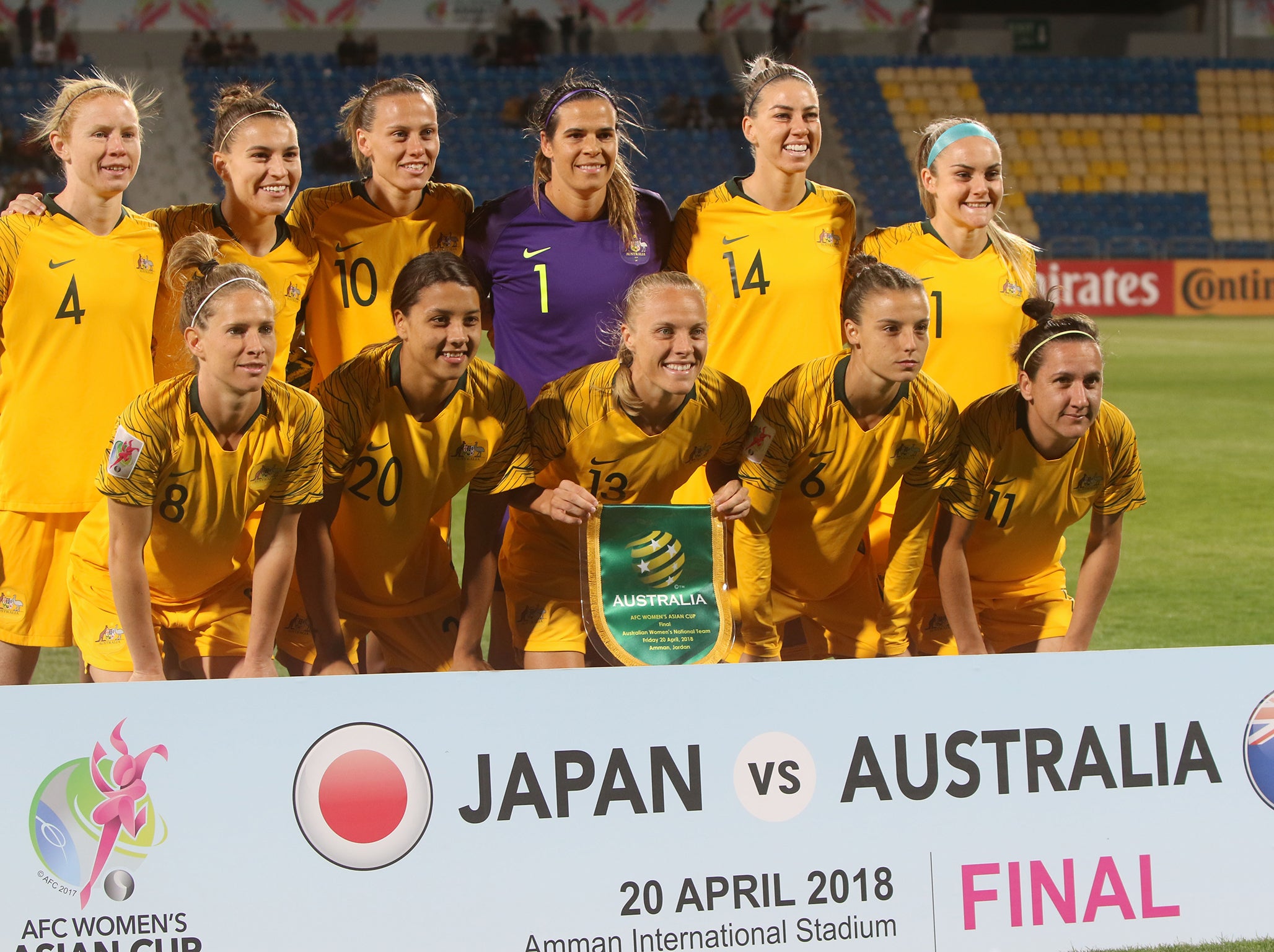World Cup 2018: How football stands on the brink of becoming the national sport of the new Australia
If cricket is the game of Old World Australia, and Aussie rules the game invented by those who settled in the 19th Century, football is shaping up to be the game of the modern day

Your support helps us to tell the story
From reproductive rights to climate change to Big Tech, The Independent is on the ground when the story is developing. Whether it's investigating the financials of Elon Musk's pro-Trump PAC or producing our latest documentary, 'The A Word', which shines a light on the American women fighting for reproductive rights, we know how important it is to parse out the facts from the messaging.
At such a critical moment in US history, we need reporters on the ground. Your donation allows us to keep sending journalists to speak to both sides of the story.
The Independent is trusted by Americans across the entire political spectrum. And unlike many other quality news outlets, we choose not to lock Americans out of our reporting and analysis with paywalls. We believe quality journalism should be available to everyone, paid for by those who can afford it.
Your support makes all the difference.In Australia, depending on which state you’re in, ‘footy’ refers to Australian rules or rugby league, not association football. Yet the men’s national football team are preparing for their fourth straight appearance in the World Cup – and football is already comfortably the most popular team sport to play down under.
If cricket is the game of Old World Australia, and Aussie rules the game invented by those who settled in Australia in the 19th Century, football is shaping up to be the game of the new Australia. A country in which 49% of the population were either born overseas or have a parent born overseas, and one which gravitates towards Asia, not Europe.
“Multicultural Australians are disproportionately likely to be brought up with a greater affinity to football,” explains Kevin Alavy, head of the sports consultancy Futures Sport.
The more diverse Australia becomes, Alavy predicts, “the more the world’s game will appeal to Australian sports fans”. Immigrants tend to bring their love of particular sports with them. So as Australia becomes more diverse, its sporting preferences will begin to look more like the rest of the world’s, which bodes well for football.
At grassroots level, this battle to turn football into Australia’s leading sport is already being won. Today, as many children play football outside school as play Aussie rules and cricket combined. In total, 1.1 million adults and children play football at a club every year – 400,000 more than play any other organised sport. These figures attest to how, even in a nation with such abundant outdoor space, the sheer ease of playing and organising football gives the sport a significant advantage – especially in a time-poor, attention-deficit age.
In a world in which organised sports participation is dwindling because people prefer to watch sport on their couch instead, Australian football has the opposite problem. “Our challenge is to convert more of these participants into fans of our domestic A-League and W-League so that we can continue to grow these leagues commercially and invest more in the game overall,” says David Gallop, the chief executive of the Football Federation Australia.
The standard of the A-League has improved; according to the 21st Club’s global team rankings, most A-League teams are now of English League One quality, and the champions Sydney FC of Championship standard. “When del Piero was here everyone else was complete shit. You just came to watch him. It's got a lot better,” a longtime season ticket holder told me during a game between Sydney FC and Newcastle Jets in January.
If the quality was not dazzling, what lingered was the refined style of the sides – they attempted to play dynamic German-style football, not kick-and-rush – which suggests that Australia is coaching young players in the modern ways of the sport.
But the paradox is that, as the A-League has got better, so attendances have declined, falling by 350,000 - 20% - from 2013/14 to 2017/18. These struggles reflect the A-League’s enduring vulnerability to other sporting attractions – like the Ashes or Winter Olympics, against which it competed this year – and the difficulties in developing football fan culture. Football is a game that Australians love to play but, outside the men’s and women’s World Cups, do not love to watch. This means that the sport lacks commercial clout compared to cricket and Aussie rules, which limits what can be invested into facilities, coaching, professional leagues and the national teams.

But young players have never enjoyed such opportunities to forge a lucrative career in football. The generation of Tim Cahill, Harry Kewell, Mark Viduka and Mark Schwarzer was decisive in opening up the world to Australian talent. The surge of money and technology in modern football also means that it is easier to scout young Australian footballers than ever before. The hold that cricket, Aussies rules and rugby league have enjoyed over the best young athletes is waning.
While at men’s level football has to tussle with other sports’ weight of history and tradition, at women’s level these barriers are far less prevalent. Rather than follow other sports, football can actually lead the way. Only in 2017 did Aussie rules create a national women's competition; the W-League was established in 2008. This investment has helped women’s participation grow rapidly, and has underpinned international success. The Matildas are currently sixth in the world rankings – 34 players higher than the men’s team – and forward Sam Kerr is among the leading players in the world game.
“Australia has been a world leader and a trailblazer for women’s sport in our own country,” says Gallop. “And with women’s football the fastest growing area of our game, we look forward to ongoing success.” Australia is bidding to host the 2023 Women’s World Cup.

A seminal moment in Australian football’s journey was joining the Asian Football Confederation in 2006. This brought a higher standard of day-to-day competition for the men's national team, which could no longer gorge themselves on beating American Samoa 31-0 in World Cup qualifying, as they infamously did in 2001, and ensured that Australia was no longer dependent on navigating the treacherous play-off match against the fifth-placed team from South America to reach the World Cup. Being part of the AFC also means that A-League clubs can play in the Asian Champions League, which Western Sydney Wanderers won in 2014.
“The potential of Australian football is unlimited,” Gallop asserts. “We’re part of the world’s most popular sport. We are the largest participation sport in one of the most multicultural nations on earth. We are a part of the Asian Football Confederation – the game’s fastest-growing region – and we are playing a leading role in the development and promotion of the women’s game.” He believes that eventually football in Australia can become not just the most popular team sport to play - but also the most popular sport to watch.
However Australia perform in the World Cup, demography, migration and globalisation are all on football’s side down under. And so a country that has an idea of exceptionalism wired into it is emblematic of a global trend: how the number one sport in the world is becoming even more dominant.
Join our commenting forum
Join thought-provoking conversations, follow other Independent readers and see their replies
Comments